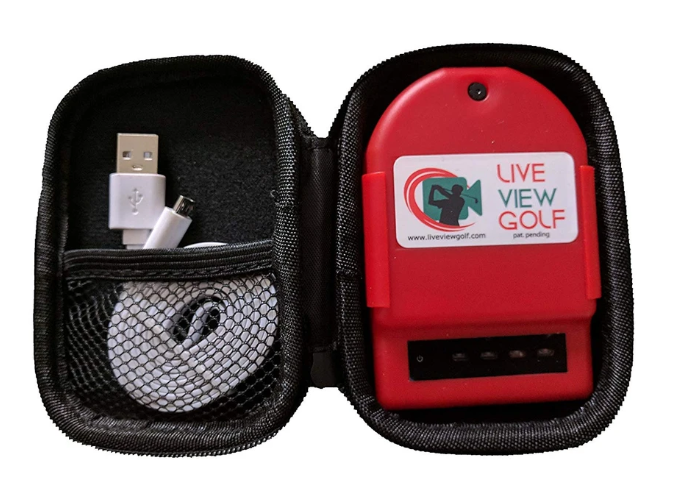Preparation for Preparation
None of the information given in this article will make any sense until you’ve competed. Competition is preparation for…preparation. So, don’t even attempt to try and figure it all out until you know what it feels like to step on the tee with the clock running. Your arms will be tight. Your grip will change. Your concentration will falter. You may slip and fall. You may whiff the ball, or take out a divot the size of a beaver pelt. It may require both hands to stick your tee into the ground. Yup, it’s that cool! And, you’ll love it and want more! So, part of getting prepared is getting on the tee as soon as possible, and getting all that behind you. Don’t worry about equipment, swing speed, ball speed, or any of the things you’ve heard about until you’ve competed. You’ll learn more in your first competition than you can imagine. Then, be sensible in your preparation. Get the basics down first, then advance in small steps.
And the most common mistakes are…
- Trying to anticipate what you’ll need before you compete. Don’t go buying long drive equipment before you’ve competed. Bring your playing driver, you favorite shoes, and some tees and get on the tee.
- Failure to use some sort of feedback mechanism during practice. Going to the range and pounding balls without feedback data might help you physically, but won’t help you improve your long drive swing….unless you’re hitting the ball exactly where you plan every swing. Doubt it! Otherwise, you need to ensure your mechanics are right….then practice your swing on plane and in the proper position. You need to be able to see your swing to know how to fix any issues you may have. More on “seeing” your swing later in this article.
- Using the wrong feedback mechanism during practice. Most long drivers worry too much, too soon, about their swing speed and ball speed. That’s great feedback, but is meaningless if the basics of your swing mechanics are out of kilter. If your swing mechanics are off, you’re probably going to have to slow down (first) to get faster. So, don’t unpack the Trackman, Mevo, Flightscope, or whatever you’re using until you get the basics down in a repeatable fashion….then start looking at club head and ball speed.
- Ordering low-loft, stiff-shafted clubs without knowing what works for your swing. There’s absolutely no way possible the guy on the other end of the phone call can tell you what club specs you need without real and basic knowledge of your swing. Even if you’re able to relay your club head speed, ball speed, and launch angle data, don’t buy more than one until you’ve done extensive testing. Start slow and figure out what works before wasting your money. Then, make sure you have a backup for each type of club setup you buy.
- Hitting practice balls without a plan. As mentioned in #2, hitting a lot of balls can help get you get into good physical shape, but hitting a lot of balls without a purpose is wasted time and effort. Grid conditions are probably going to be different at every event you attend. You should practice hitting in every imaginable condition so you have the shot you need when you need it. Keep this in mind….anybody can hit down wind. Hitting into a head wind will show you what you need to work on most. And, for some reason, we’ve had head wind conditions in 85% of our tournaments. You should practice hitting draws and fades to be able to use as much of the grid as possible…regardless of the conditions. You should also consider the differences when hitting on a dry / hard grid compared to a wet / soft grid. How do those conditions affect your planning? How do those condition affect your approach in a head wind, tail wind, or cross wind?
- Hitting too many practice balls on the day of competition. If you’ve figured out how to handle all the conditions described in #4, you’re going to have a pretty good idea what you’re going to need based on the conditions at the event. You’re practice routine should prepare you to perform at your peak…at the time of your round. This is not a time to introduce change in your routine. This is a time to replicate proper preparation.
- Not having a plan for every ball in your competition set. I’m guessing at least 95% of amateur long drivers have no plans related to ball 1, 2, 3, 4, 5,…etc. A minimum plan should be to get one in the grid as early as possible…..like ball #1. Getting that one in the grid will relieve much more pressure than crushing ball #1 OB left. If that happens, chances are that ball #2 is going OB right if you made a correction…or OB left if you try the same thing hoping for a different result. So, have a plan…and execute it.
Back in #2 I mentioned the importance of seeing your swing. We’ve found an unbelievable and inexpensive tool that EVERY golfer needs…especially long drivers. Live View Sports developed their Live View Golf video feedback device and system in a way that allows anyone to have real time swing-mechanics feedback. No more taking your facing and down-line videos, sending them to a coach (or friend) and asking for feedback….that you’ll get in hours, days, or weeks. Check out the video below to see just how simple this device is to use. You’ll immediately see the advantage of Live View Golf’s instant feedback.
This device is a no-brainer at $349. Check out all their “how-to-use” videos at https://liveviewsports.com

